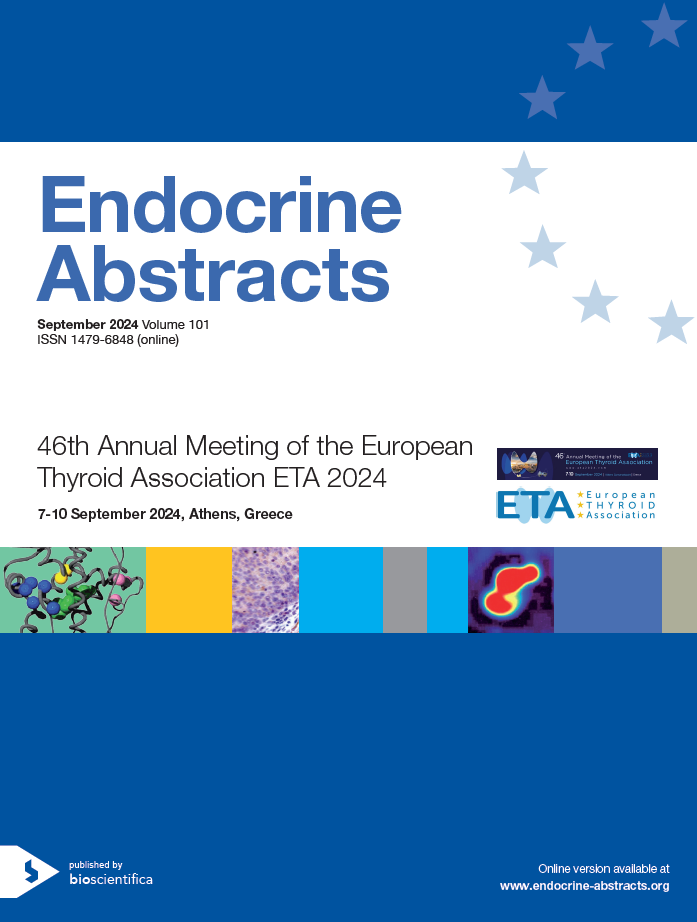
46th Annual Meeting of the European Thyroid Association (ETA) 2024
ea0101ps2-19-01 | TED | ETA2024
Analysis of thyroid stimulating immunoglobulins vs conventional TSH-receptor antibodies in clinical practice
Manousou Sofia , Mamasoula Zoi , Abdi Saran Mina , Olerod Goran , Filipsson Nystrom Helena
ea0101ps2-19-02 | TED | ETA2024
In vivo and in vitro evidence for a protective role of autoantibodies against the insulin-like growth factor-1 receptor (IGF-1R) in graves’ orbitopathy
Cosentino Giada , Lanzolla Giulia , Comi Simone , Menconi Francesca , Elisei Rossella , Santini Ferruccio , Marino Michele
ea0101ps2-19-03 | TED | ETA2024
The association of the cholesterol metabolic profile and fatty acid content with the clinical phenotype of graves’ orbitopathy
Saric Matutinovic Marija , Vladimirov Sopic Sandra , Zarkovic Milos , Ciric Jasmina , Gojkovic Tamara , Djuricic Ivana , Ignjatovic Svetlana , J. Kahaly George , Beleslin Biljana
ea0101ps2-19-04 | TED | ETA2024
Analytical performance of a novel bioassay for blocking thyrotropin receptor antibodies
George Augustine , Lotz Johannes , Bossowski Artur , Ganz Anna-Lena , Wolf Jan , Kahaly George
ea0101ps2-19-05 | TED | ETA2024
Lymphocytes’ immunophenotype guided treatment in a thyroid eye disease patient successfully treated with rituximab
Armenti Mirco , Muller Ilaria , Maioli Sara , Moschetti Giorgia , Rossi Giada , Crivicich Erica , Dazzi Beatrice , Montacchini Benedetta , Curro Nicola , Mantovani Giovanna , Geginat Jens , Salvi Mario
ea0101ps2-19-06 | TED | ETA2024
Graves orbitopathy, does all the patients evolve in the same way?
Perini Nicolas , Santos Roberto , Romaldini Joao , Villagelin Danilo
ea0101ps2-19-07 | TED | ETA2024
Duration of treatment for thyroid eye disease
Kozaki Ai , Inoue Rishu , Naoko Yaji , Hagimoto Ai , Nishiyama Koichi , Inoue Tosyu
ea0101ps2-19-08 | TED | ETA2024
Management of thyroid eye disease (TED) related strabismus in euthyroid patient with with negative anti thyroid antibodies
Shonia Natia , Zavrashvili Nino , Margvelashvili Natia
ea0101ps2-19-09 | TED | ETA2024
A marker of inflammatory state and the clinical outcome of active go to parenteral glucocorticoids
Le Moli Rosario , Naselli Adriano , Piticchio Tommaso , Tumino Dario , Belfiore Antonino , Frasca Francesco



